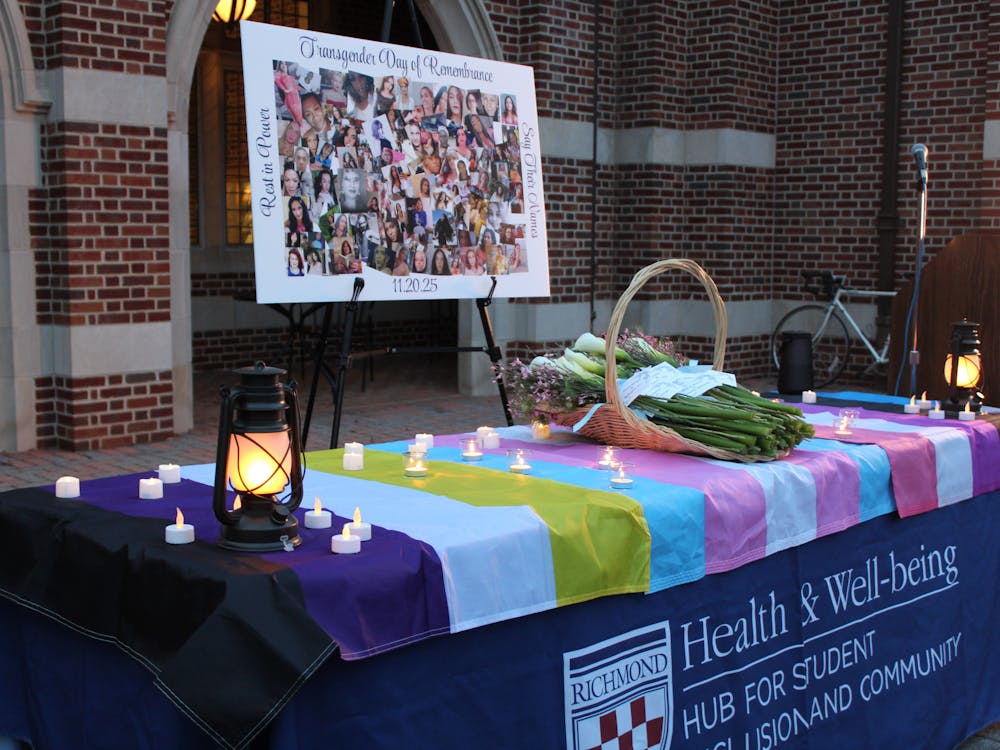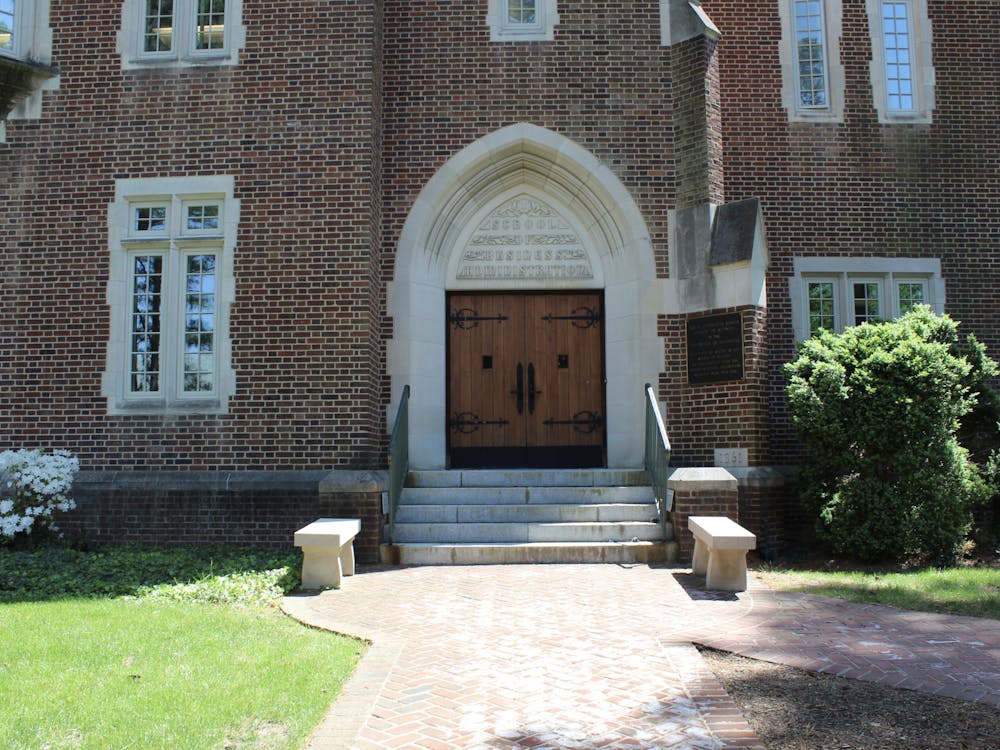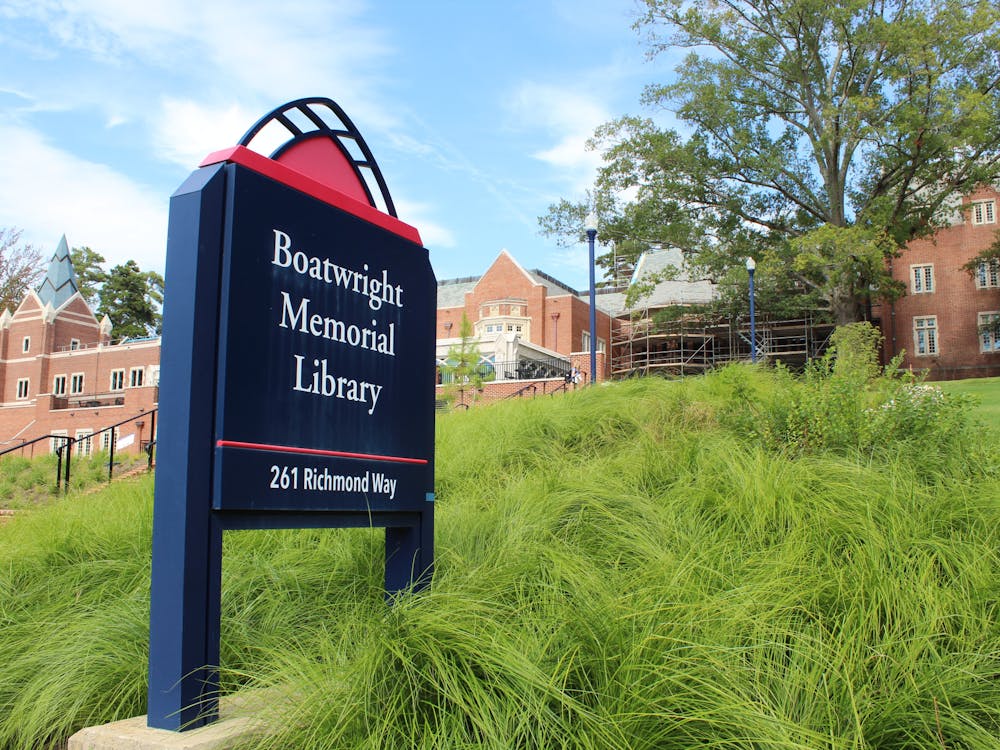Clarification Appended
Updated 4:35 p.m., June 6, 2008 EDT
WASHINGTON -- University officials are moving forward with plans to install an outdoor public address warning system by the start of the 2008-09 academic year after last month's report of a gunman on campus prompted a lockdown.
The decision came after officials evaluated their response to the intruder and determined that they could respond to such incidents more quickly and do more to ensure the community's protection.
Some students and community members continued walking through campus oblivious of the possible danger, either because they weren't near e-mail, hadn't activiated cell phone alerts or weren't a student, faculty member or staff member. At the time, the campus was overrun with dozens of officers scouring the area, looking for the person who police later arrested and identified as 19-year-old Seth A. Newman.
University of Richmond spokesman Brian Eckert said in an e-mail to The Collegian that messsages announced on the new system would be those that pose an immediate, serious threat to the entire campus. currently, a siren is activated on campus only during tornado activity.
"We take seriously the great responsibility we bear for the safety of our students, staff, and faculty, as well as the guests we have on campus every day," President Edward Ayers wrote to the university community in an e-mail May 8. "In the last year we've made a number of security improvements on campus, and our officers have conducted emergency drills and worked in coordination with our allies in Richmond and Henrico."
Ayers said those preparations paid off during the lockdown, but he urged students to make the system more effective by registering their cell phone contact information.
And students have done just that, school officials say.
"The numbers have gone up since before the incident," Kathy Monday, vice president of the University of Richmond's information services, told The Collegian in an e-mail. "I expect they will continue to go up over the next few days as a result of Dr. Ayers' message and increased awareness in general."
Monday said 71 percent of students have enrolled to receive voice messages on their cell phones, and 31 percent of students have enrolled to receive SMS text messages. Officials can't force students to get text messages because there's a fee associated with them, said Linda Evans, a spokeswoman for the university.
The numbers are significantly smaller for faculty. About 27 percent of them have enrolled to receive voice messages on their cell phones, and 20 percent receive text messages.
Enjoy what you're reading?
Signup for our newsletter
About 42 percent of staff members receive cell phone voice messages. Thirty percent get text messages.
The alert system sends all students and faculty in credit programs and all staff automatic e-mails to their university-provided address and a phone call to their university-assigned phone extension, Monday said. Students living off-campus receive a call at their local phone number of record. Signing up for these alerts is not required because they're automatically sent.
But some students and staff don't have phones set up in their rooms. Even more weren't around their cell phones -- assuming they were signed up to receive messages -- when the alert was issued.
That has prompted university police, safety services and facilities to install a new audible alarm system that would announce emergencies over a loudspeaker.
"A number of schools have such systems and part of the university's review will be to determine how the various systems are being used," spokeswoman Linda Evens said in another e-mail to The Collegian. "We want to make sure such a system would be helpful and have a practical use in our overall emergency messaging system."
The university is also training several officers in the university's police department to issue alerts, Evans said. Monday and Doug West, director of telecom support services, both have the authority to initiate the system, and three staff members in the university's communications office are also trained, Evans said.
Virginia Tech and Virginia Commonwealth University recently upgraded their systems to allow campus law-enforcement agencies to do the same. Richmond's decision to follow brings it up to speed with most other schools in the state.
The suspect was first spotted around 2:30 p.m., Eckert said, contrary to widespread reports that the suspect was seen 20 minutes later. He acknowledged there was a minor delay between sending the first alert, because Doug West, director of telecom services and the employee most familiar with the alert system, wasn't at his desk. It took 17 minutes from the time police request an alert to the time it was sent.
"The system worked well," Evans said, "but we know we can be faster."
(Eds. Note: Collegian staff writer Dan Petty reported this story from Washington, D.C. This version CLARIFIES that it is not required to sign up for alerts to campus phones or e-mail accounts because they are already automatically sent. It also ADDS detail about progress for alert system plans.)
Support independent student media
You can make a tax-deductible donation by clicking the button below, which takes you to our secure PayPal account. The page is set up to receive contributions in whatever amount you designate. We look forward to using the money we raise to further our mission of providing honest and accurate information to students, faculty, staff, alumni and others in the general public.
Donate Now


